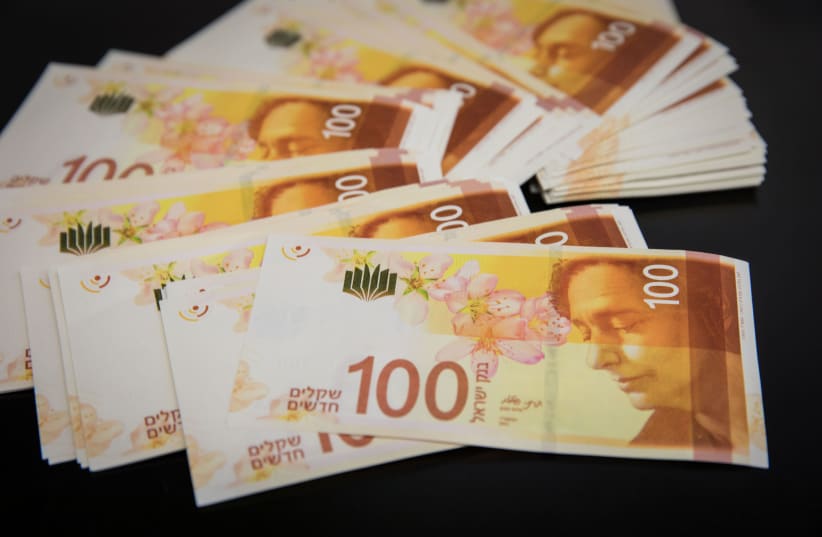Jerusalem morning. Late summer. 4 a.m. Old Katamon neighborhood. The cool light wind of Jerusalem summer. Silence. Not even a crier announcing penitent prayers or the high-pitched demand of a newborn coming from an open window. My husband and I are returning from abroad.
It’s my father’s yahrzeit, the anniversary of his death 49 years ago on a visit to Jerusalem.
Both of my parents died in summertime. My husband and I plan our vacations not be abroad for their yahrzeits. Finding a synagogue, particularly a woman-friendly one, is a challenge on foreign soil.
Although our neighborhood of Old Katamon wouldn’t be characterized among the city’s religious neighborhoods, there are at least five synagogues within 100 meters of our home on Hahish Street. In our part of Jerusalem, most synagogues have become accepting of a woman saying Kaddish.
But at 4 a.m., not even Sephardi slihot prayers are happening. I’m indecisive about which way to turn. To make this more complicated, over our vacation neighbors have blocked our parked car, so seeking a first-light-of-day minyan (prayer quorum) at the Kotel or going to an assuredly woman-friendly minyan at Yedidya Synagogue in Baka aren’t easy options.
The history of the Shtiblach
There’s always Beit Haknesset Hamerkazi Shtiblach at the top of Hahish Street. The name is descriptive, the plural of the Yiddish term shtibl, with the German cognate stubel, and means “ little rooms.”
In an old building, four prayer rooms offer minyanim all day, every day. The term shitlbl came into use for the storefront, improvised prayer rooms, particularly associated with the proliferation of the Hassidic movement beginning in the 18th century. Katamon Shtiblach draws many regulars and drop-ins, including every Israeli ethnic group and Orthodox permutation – from wearers of streimels to knitted kippoot. At its peak, before the pandemic, some 2,500 men prayed there every day, a number that has declined somewhat since the pandemic.
According to its oral history, the Shtiblach reputedly came into being in 1948.
In the weeks preceding Israel’s independence and the April Battle of San Simon, Katamon (officially renamed Gonen) was secured. When the Old City fell in May, women and children were moved to Katamon. The men were taken as prisoners of war, returning after the 1949 ceasefire. The new Katamon residents sought a place to pray. A decrepit old building at the crest of the hill was available. It attracted a mix of Ashkenazim and Sephardim, Hassidim and Mitnagdim.
Over the decades, certain disputes broke out, such as whether or not to say Hallel on Independence Day. Because there are four different prayer rooms, differences of opinions and styles of prayer came to characterize certain minyanim and could coexist. The building remained spartan, with single-phase 25 amp electricity until 1995, when legendary sexton Arnie Rund added his energy and fundraising talents to the community. Air-conditioning was introduced, along with a plasma screen that would announce the room of the next minyan, starting approximately every 15 minutes.
Have I mentioned that 99% – maybe more – of those who pray there are men?
While the pandemic was lessening and synagogues reopened, more women – including me – would sometimes join the Friday night outdoor minyan, which had a narrow but pleasant women’s section. Arrangements are made for women on the holidays, and there are additional pop-up women’s sections from time to time.
The first minyan is at 6 a.m., and there is an assured large minyan at 8 a.m., my husband says, before he falls asleep. It’s now 4:30 a.m.
I set my alarm clock for 7 a.m. There are already dozens of men praying when I walk up the street. The first young man I encounter outside the building investigates and tells me there is only a women’s section at the 7:45 minyan, up the stairs.
I go upstairs. No one is there. I turn on the lights. Chairs are lined up around a hole in the floor which opens to one of the prayer rooms. It can be closed off with barriers. Now one side is open. An energetic minyan gets going below. I can hear every word, and I chime in each time for the Kaddish. I don’t know if anyone can hear me from below or my amens in particular, but I am fine with this arrangement. To my relief, no one shushes me. In the year I said Kaddish for my mother, when praying at other synagogues I was shushed a few times, and that was hurtful.
Before the Monday Torah reading begins, there is an auction for aliyot at the bargain price of NIS 10. On one hand, I want to shout down and outbid them with a NIS 100 donation in my father’s memory. On the other hand, I don’t want to risk anyone objecting to my Kaddish-saying presence. I regret not waking my husband, who could have represented me. Among the few men I can see through the ceiling opening, I don’t recognize anyone to be my advocate.
An hour after the final morning Kaddish, my car is free but I am too sleepy to drive to work as I usually do. To get to the bus, I need to walk up Hahish Street, past the Shtiblach. Halfway up, on the sidewalk is an orange NIS 100 bill, adorned on one side with a portrait of poet Leah Goldberg surrounded by almond trees; and on the back, the words of her poem: “White days, long, like the rays of the sun in the summertime.”
I look around. There’s no one on the street. A few minutes later, a tzadik-looking man is walking my way. I tell him what I’ve found, and he shrugs. According to the Halacha, the money is mine. I know the Halacha, too.
Finding money without any identifying signs – it belongs to the finder (unless found directly in front of a money changer’s table). The person who has lost it has presumably given up hope. Still, NIS 100? He suggests I walk to the Shtiblach and ask if anyone has lost money.
That’s what I do. No one claims it. I’m directed to a card table, where I learn donations are made. “I have found NIS 100 and want to donate it in my father’s memory,” I say. The slim, bearded man on duty nods and asks for my father’s full name. “Avraham ben Fischel and Odes,” I tell him. He writes it all down and pronounces that a donation has been made in elevation of my beloved father’s soul.
Welcome home to Jerusalem.
The writer is the Israel director of public relations and communications at Hadassah, the Women’s Zionist Organization of America. Her latest book is A Daughter of Many Mothers.

